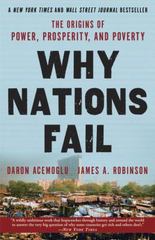Question
1.(a) Why is the sign of price elasticity of demand negative? What will happen to total revenue if demand is elastic and price falls? (b)
1.(a) Why is the sign of price elasticity of demand negative? What will happen to total revenue if demand is elastic and price falls? (b) When the price of good X is $6, the quantity demanded is 5 units. When the price rises to $10, the quantity demanded falls to 1 unit. Calculate the price elasticity of demand.
2.(a) When per capita income is $10,000, quantity demanded of cars is 100,000. When per capita income increases to $11,000, quantity demanded of cars increases to 105,000. Calculate the income elasticity of demand for cars. Is the car a normal good or inferior good? Explain.
(b) When the price of good Y increases from $50 to $100, the quantity demanded of good X increases from 125 to 150 units. Calculate the cross elasticity of demand. Are good X and good Y substitutes or complements? Explain your answer.
3. (a) Draw and explain the shapes of the total utility and marginal utility curves.
(b) State and explain the condition for consumer equilibrium.
4. (a) In each of the following pairs of goods, which has the higher price elasticity of demand?
(I) Airline travel in the short run or airline travel in the long run. (ii) Television sets or Sony
television sets.
Justify your answers.
(b) A college raises its annual tuition from $23,000 to $24,000, and its student enrollment fallsfrom 4,877 to 4,705. Compute the price elasticity of demand.
5. (a) What do we mean by "price taker"? Explain why a firm in perfect competition is a price taker. How is this price determined? Explain. (b) "The demand curve for a perfectly competitive firm ishorizontal, and it is also the firm's marginal revenue curve." Explain.
6. (a) Explain with the help of a graph how a perfectly competitive firm determines its profit-maximizing quantity of output. (b) Explain with the help of a graph the effect of a decrease in marginal cost on the profit-maximizing quantity of output of a perfectly competitive firm.
7. (a) Explain the barriers to entry into the monopoly industry. (b) Explain the characteristics of the monopolist's demand and marginal revenue curves. Are they the same as in perfect competition? Explain.
8. Explain with the help of a graph how a monopolist determines his profit-maximizing price and output.
Step by Step Solution
There are 3 Steps involved in it
Step: 1

Get Instant Access to Expert-Tailored Solutions
See step-by-step solutions with expert insights and AI powered tools for academic success
Step: 2

Step: 3

Ace Your Homework with AI
Get the answers you need in no time with our AI-driven, step-by-step assistance
Get Started


